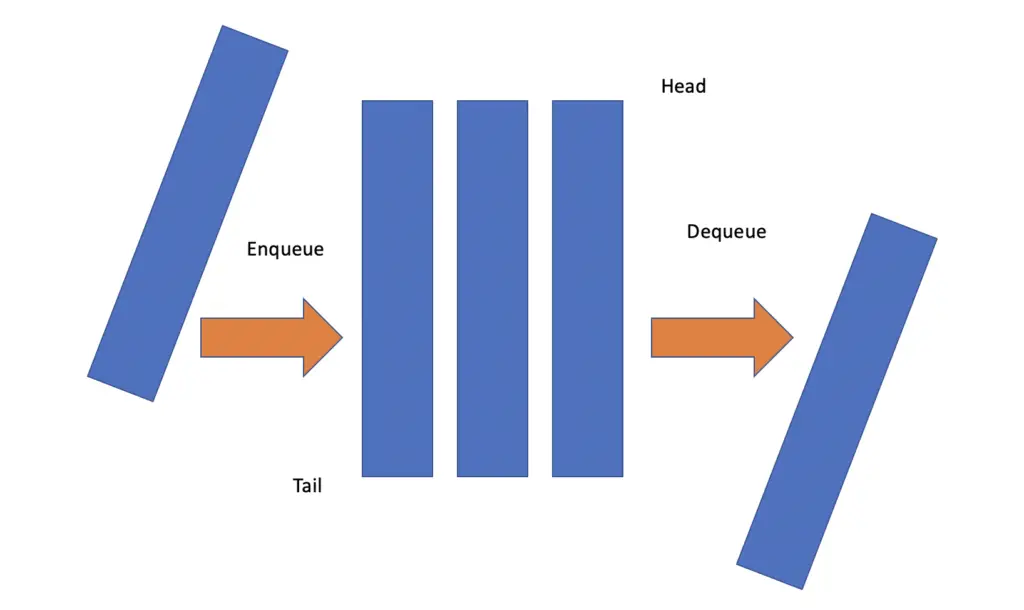
This structure also stores the count of the number of elements, the maximum size of the stack, and the current node at the TOP of the stack. In Stack ADT, instead of the actual data, the nodes store pointers to the data. When we were studying lists we came to know that the data are stored in the nodes of the datatype.
QUEUE JAVA FULL
It returns true if the list is full and false if empty. isFull()– This function is similar to the isEmpty() function. isEmpty()– This function returns a boolean value to represent if the list is empty or not.Ĩ. size()– This returns the n number of elements present in the list.ħ. replace()- This replaces any element by the given element in the list.Ħ. removeAt()– This element removes the element at the given position in the non-empty list.ĥ. However, the array has to be non-empty.Ĥ. remove()- This method removes the first occurrence of the element in the array. Note that you can insert this element in the list in any position.ģ. insert()– This method inserts an element of the same type as the rest of the list into the list. get()– This method returns an element at the specified positionĢ.

We can perform a number of operations on a list.ġ. Many classes, such as the LinkedList Class, the ArrayList class, all implement the list interface. This interface would help us declare instances of Arraylists, lists, and so on. This is why there is an Interface, namely the List interface.


Also, if you are a competitive programmer, implementing a linked list class for every program is tedious. If you have practiced designing lists in Java, you must have seen that the work of devising a new class each time is actually very tedious. If you have not, do not worry they are very easy to master. You must have heard about ArrayLists, which are basically dynamic arrays in Java. Join DataFlair on Telegram!! List Abstract Datatype in Java Stay updated with latest technology trends This is evident when you add a new item to a list that changes the object itself. Mutators – These operations change the object itself. For example, if you want to check whether a stack is empty, the function takes a stack object and returns a boolean value.Ĥ. Observers – These are essentially the operations that take an object of a single type and return an object of a different type. For example, when you merge two strings together, the producer method combines the two string objects and returns a new object.ģ. It does this by performing some kind of operation on the objects and returning a new object. Producers – This may sound similar to the creator operations but producers produce a different object of the same type. But a creator will never take an object of the same type as itself.Ģ. However, note that some creators can take objects as parameters too. Creators – These operations primarily create objects of a certain type. Operations on Abstract Datatypes in Javaġ. This enables the programmer to easily use complex data structures without thinking about its implementation. You just present the user with the datatype and the operations for that datatype.

Simply speaking, if you define a datatype with the help of a programming language and then hide its implementation, then it is an abstract datatype. There are many different types of abstract data types in Java. In Java, you can implement abstraction by using classes and interfaces.Ībstract Datatypes are the datatypes where you can logically work with the datatype, but you would not know the inner workings of the datatype. However, to fly a plane, do you need to know how the engines work? Do you know how the fuel discharge system works in an aircraft? No. Years of flight school and experience have sharpened your skills as a pilot and you are ready to take off. You are Captain John Wick and you are in charge of flying the Boeing 777 from Delhi to London. Put yourself inside the cockpit of a plane. Before we start to read about the topic in detail, let us take a real-life example of Abstract Data type in Java. It brings out the beauty of Java and its abstract implementation. The order helps to keep the displayed tasks in a deterministic order (new subtasks * appear below older ones) and not jumbled together in some random order.Free Java course with 5 real-time projects Start Now!!Ībstract Data types in Java are the most conceptual thing to learn in Java. This can be used to display, for example, currently executing * tasks. ** * Gets a list of the unfinished Allocation}s in the order in which those * Allocation}s were encountered.


 0 kommentar(er)
0 kommentar(er)
